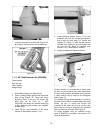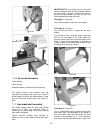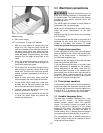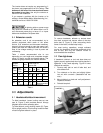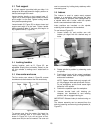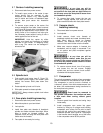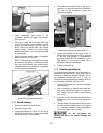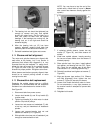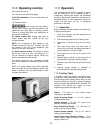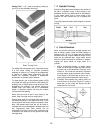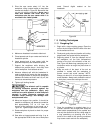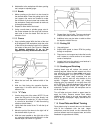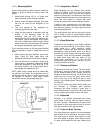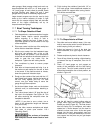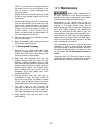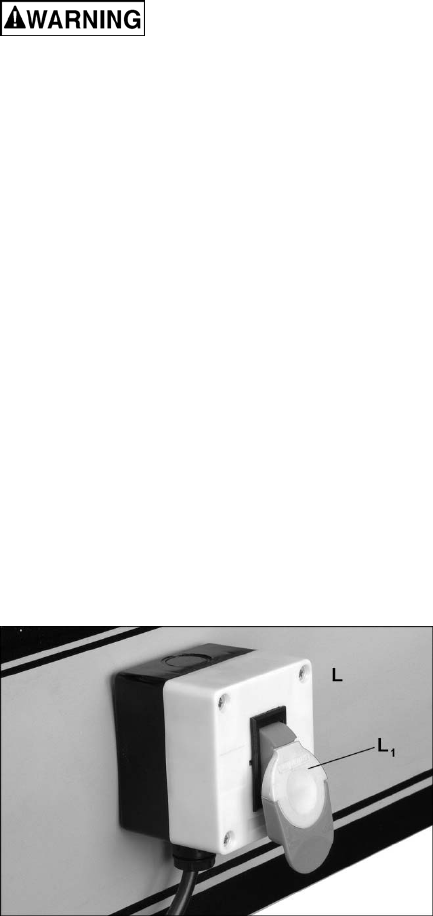
22
10.0 Operating controls
See Figures 33 and 34.
(H) Vacuum on/off switch with gauge.
(I) On/Off (headstock): Push in to stop lathe; pull
out to start.
(J) Forward/reverse
When turning with face plate or
vacuum chuck, make sure both set screws on the
plate/chuck are tight before reversing spindle.
Failure to comply may allow face plate/chuck to
spin loose from spindle.
(K) Speed control dial: Always start lathe at
lowest speed, with dial rotated all the way
counterclockwise.
NOTE: Do not attempt to alter settings of the
Variable Frequency Drive (A.C. Inverter). Use only
the controls on the front of the headstock. See
section 8.3 for more information.
(L) On/off (remote switch): Lift paddle on switch
box to start. Push in to stop. The safety key (L
1
)
can be removed to prevent starting. Safety key
must be reinstalled for lathe to start.
The remote switch box has a magnetic backing
and can be attached to any metallic surface of the
lathe.
NOTE: If a power outage occurs while operating
lathe, the lathe will not automatically restart once
power is restored. Cycle the on/off switch in order
to restart the machine.
Figure 34
11.0 Operation
The information which follows is general in nature
and not intended to be a complete course in
woodturning. Nothing can replace the knowledge
gained by talking with experienced woodturners or
consulting books or trade magazines. Above all,
simple trial and error will aid in developing
proficiency in the craft.
11.1 Inspection
Before operating the lathe, check that everything is
in proper working order:
1. Level your machine; use the leveling feet to
help reduce vibration.
2. Check bearings; adjust only if endplay exists.
3. Check belt; it should be snug but not overly
tight.
4. Bed ways; keep clean, use steel wool to
remove any rust spots, and apply paste wax to
prevent buildup of rust and finishes.
5. Tool support; use a mill file to remove nicks
and dings.
6. Spindle tapers; should be clean and free of
dust and chips for proper seating of tapers.
7. Tailstock; clean and lubricate quill and locking
device.
8. Lighting; proper lighting is essential to
eliminate shadows and reduce eye strain.
11.2 Turning Tools
If possible, select only quality, high-speed steel
turning tools. High-speed steel tools hold an edge
and last longer than ordinary carbon steel. As one
becomes proficient in turning, a variety of specialty
tools for specific applications can be acquired. The
following tools provide the basics for most
woodturning projects (see Figure 35):
Skews – 1-1/2" and 1" or 1-1/4", used to make
finishing cuts and details.
Large Roughing Gouge – 1" to 1-1/4", used to
eliminate waste wood.
Spindle Gouges – 1/4", 3/8", 1/2", used to turn
beads, coves and other details.
Deep Fluted Bowl Gouge – 1/4", 3/8" and 1/2",
used for turning bowls & plates.
Square Scraper (Bedan) – 3/8” or 1/2", used to
create square shoulders.
Large Round Nose (Domed) Scraper – 1-1/2",
used to reduce ridges on interior of bowls, round
edges of bowls, etc.



